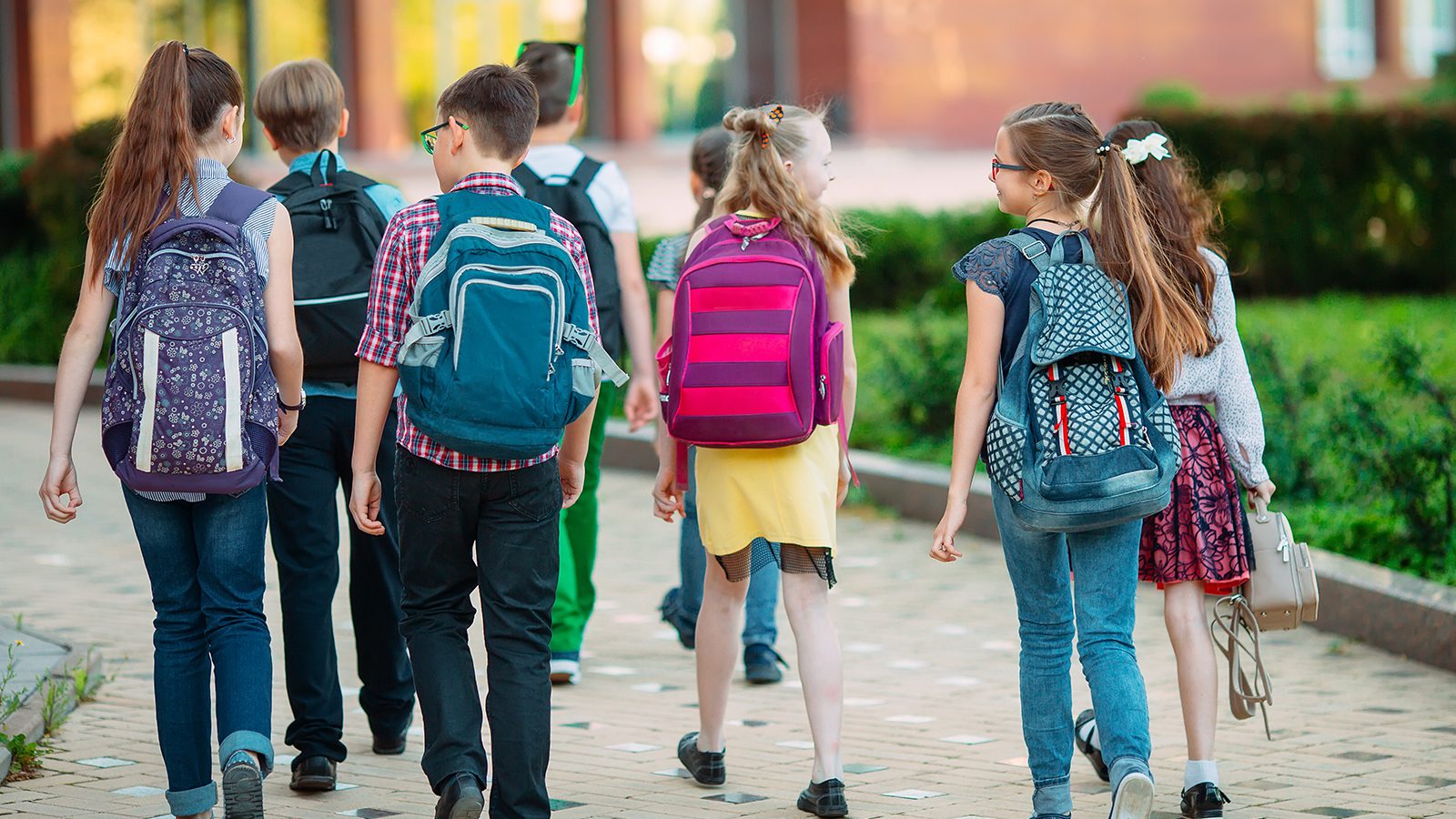Many children today complain about back pain from carrying heavy backpacks to school. Health experts are now sounding the alarm about this growing problem, advising parents to double-check their children’s book bags. They say that overweight book bags can impact children more than people realize.
Data from the U.S. Consumer Product Safety Commission paints a clearer picture of the severity of the problem. The agency estimates that an annual average of 7,500 kids under 19 years old had serious backpack-related injuries from 2017 to 2019. The children had severe enough injuries to warrant emergency room visits.
Concerns about the impact of heavy backpacks on children’s health highlight the importance of durable and ergonomic solutions. Opting for a well-designed backpack from a reputable sewing company can help mitigate these risks.
These backpacks are meticulously crafted with robust materials and ergonomic layouts, effectively distributing weight to reduce strain on young shoulders and backs. Parents are encouraged to explore options that emphasize comfort and practicality, ensuring their children can carry essentials safely and comfortably.
In specialized fields such as tactical or medical settings, industrial sewing contractors like https://www.fieldtexcases.com/ excel in manufacturing backpacks that adhere to stringent standards. Their expertise in crafting tactical and medical-grade backpacks ensures durability and functionality, capable of withstanding rigorous environments while offering superior organization and comfort.
Partnering with Fieldtex Cases allows organizations to access tailored solutions that prioritize safety and performance, meeting the unique demands of various industries. Choosing high-quality backpacks from trusted manufacturers not only enhances safety but also promotes long-term health benefits for both children and professionals.
While most children with back pain don’t require a visit to the ER, it can still take a toll on them. For example, one mom of a 12-year-old girl said her daughter complained about upper back and neck pain for months, according to Fox News.
Initially, the mom from Long Island, N.Y., thought her daughter’s involvement in sports might explain her body aches. However, a visit to their family physician revealed her daughter’s overloaded backpack was to blame.
“She was picking up a backpack of books and going from classroom to classroom throughout the day and then carrying the bag to and from school. That’s a lot of lifting,” the mom told Fox News Digital in an interview.
After the appointment, her daughter underwent several weeks of osteopathic therapy to alleviate her neck and back pain. The treatment included spinal manipulation to improve movement by releasing pressure within her joints. The osteopath also recommended an exercise routine to improve her upper back strength to support the book bag’s weight.
Health experts warn how parents should keep an eye on their child’s backpack weight. They listed these warning signs of an overloaded book bag:
- The child struggles to put on or take off the backpack
- Child’s posture shifts (ex. they lean to the side or forward) when wearing a book bag
- The child complains of numbness or tingling in their extremities
- Red indentations appear on the child’s shoulders from the book bag
- The child expresses discomfort when wearing the backpack
Health Experts Explain How Heavy Backpacks Harm Children
Dr. David Gentile, an osteopathic physician from New York, regularly treats patients complaining of back pain. He told Fox News that heavy backpacks could severely affect a child’s posture. Book bags can cause the spine to curve and twist to the side, also known as scoliosis.
Thousands of children and adolescents receive treatment for the condition each year. However, Gentile believes teaching children proper posture and self-care may prevent spinal conditions.
“We see it all the time in the older generation — the use of comfortable chairs at work, the sit-stand desks,” he said.
So “it’s evident we have become more aware of proper work ergonomics. Now it might be time to really educate children about these comfortable and functional changes to improve their health outcomes,” said Gentile.
He added that cities across the country should launch public health campaigns to help prevent childhood back pain. Gentile said that early identification of symptoms and genetic factors could also alleviate pain resulting from children carrying too much weight.
He added, “The implementation of physical therapists in physical education classes and educating teachers, administrators, children, and their families on appropriate ergonomics could all be beneficial.”
Most people don’t give their child’s backpack a second thought during back-to-school shopping. However, according to Edward Farrell, co-founder of Physical Solutions Physical Therapy, choosing one with a proper fit and weight capacity can make a difference.
“Our kids are often strategizing the navigation of the hallways, locker to classrooms, with as few stops as possible to their locker, if they even stop at their locker at all,” he told Fox News.
Farrell added that if a child’s book bag weighs a sizable percentage of their body weight, it can cause back pain.
“Imagine a 100-pound child carrying a 30-pound backpack all day,” Farrell said.
He also said backpacks with one strap over the shoulder could make shoulder and back pain worse. A sling pack puts excessive strain on one side of the body, potentially causing scoliosis. A heavy load can make children lean to one side or have rounded shoulders, even with a properly fitting book bag with two straps.
Tips on Choosing a Quality Backpack
Farrell advised students to lighten their pack’s load and choose a pack with two wide straps. Doing this helps balance the load across both shoulders and the neck. He added that, most importantly, students should stand tall with their chests out to maintain good posture.
Bill Schwarz, a physical therapist in Massapequa, N.Y., said students could reduce their pack’s weight by making multiple trips to their locker. Many students try to save time by carrying all their books, which adds unnecessary weight to their bags.
Schwarz also said, “Keep straps snug. If too loose, the bag hangs lower, increasing the torque on the mid and low spine.”
Finally, he advised students to bend their knees when picking their bags off the floor. This posture will alleviate unwanted strain on the lower back and knees.
Physical therapists and osteopaths recommend these tips for choosing backpacks:
- Pick a light bag with ample back lining and wide, padded shoulder straps.
- Choose a pack with two straps and use both while carrying the bag.
- The bottom of the backpack should sit in the middle of the back, about four inches below the waist.
- Choose a pack with a waist belt to provide additional support to the back and shoulders.
- A backpack should weigh less than 10-15% of a child’s body weight. For example, if the child weighs 100 pounds, the backpack shouldn’t exceed 10-15 pounds.
- Pick a bag with several compartments, and utilize all of them when carrying books. Pack the heaviest books closest to the spine to encourage proper posture.
- A pack with wheels can eliminate back problems associated with traditional backpacks. However, remember that your child may have to lug them up stairwells and through rough terrain.
Final Thoughts on an Osteopath’s Warning About Heavy Backpacks
Many students carry all their books from one class to another. Doing this may save time but can cause undue back and neck strain. Therefore, health experts recommend that students lighten their load by making several trips to their lockers or desks. Also, they should choose a lightweight book bag with two straps to alleviate back pain. Helping students choose the proper pack and encouraging positive habits could help many children avoid back pain.



















